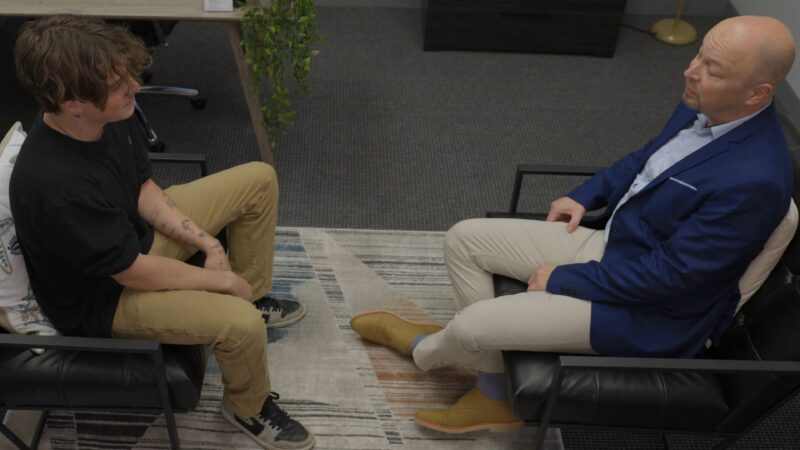The realm of mental health treatment offers various approaches to address the unique needs of every individual, one of them being Partial Hospitalization Programs (PHPs). They bridge the gap between inpatient and outpatient care, providing intensive treatment during the day while allowing patients to return home at night. They are designed for individuals who require more substantial support than outpatient care can offer but who do not need 24-hour supervision provided in an inpatient setting.
They have a rich history that dates back to the deinstitutionalization movement of the 1960s and 70s. This era saw a shift from long-term institutional care for mental health patients to community-based outpatient services. The concept of PHPs emerged as a response to this change, intending to offer a structured, intensive treatment option that could prevent hospitalizations or facilitate the transition from inpatient care.
The purpose and goals of PHPs vary depending on the specific program and the individual’s needs. Generally, they aim to stabilize the individual’s mental health condition, develop or enhance coping and life skills, promote self-care habits, and facilitate a smooth transition to outpatient care or other less intensive services. PHPs also strive to reduce hospital readmissions by providing a comprehensive and integrated care approach that enables individuals to remain in their community while receiving intensive treatment.
What Forms of Mental Health Therapy Are Utilized in a Partial Hospitalization Program?
Partial Hospitalization Programs (PHPs) typically utilize an array of mental health counseling approaches to ensure comprehensive care for patients. The primary goal of these therapies is to stabilize the patient’s condition, teach coping skills, and address any underlying issues that may contribute to the mental health condition.
- Individual Therapy: This involves one-on-one sessions with a licensed therapist or psychologist, using a variety of therapeutic modalities tailored to the individual patient’s needs. Common approaches include Cognitive Behavioral Therapy (CBT), which helps individuals identify and change negative thought patterns; Dialectical Behavior Therapy (DBT), which focuses on mindfulness, emotional regulation, and interpersonal effectiveness; and Acceptance and Commitment Therapy (ACT), which emphasizes acceptance of negative feelings and commitment to personal values.
- Group Therapy: PHPs often include group therapy sessions, where individuals can interact with others who are experiencing similar issues. This can provide a sense of community and understanding, reduce feelings of isolation, and allow patients to learn from the experiences and coping strategies of their peers. The specific format and content of group therapy can vary, including psychoeducational groups, process-oriented groups, and skills-based groups.
- Family Therapy: The involvement of family members in the treatment process is often beneficial. Family therapy sessions can help to address issues within the family dynamic, educate family members about mental illness and recovery, and develop strategies for providing support and maintaining healthy boundaries.
- Psychiatric Consultations: Psychiatrists play a vital role in PHPs, often overseeing medication management and providing consultation regarding the overall treatment plan. They can help to manage psychiatric medications, monitor for side effects, and adjust dosages as necessary.
- Psychoeducation: These sessions involve teaching patients about their mental health conditions, the treatment process, and strategies for managing symptoms and preventing relapse. This knowledge can empower patients to take an active role in their recovery.
- Specialized Therapies: Depending on the PHP, additional specialized therapies may be offered. These could include trauma-focused therapies, such as Eye Movement Desensitization and Reprocessing (EMDR) or Prolonged Exposure (PE); art or music therapy, which use creative expression as a therapeutic tool; or mindfulness and relaxation training, which teach techniques for reducing stress and managing anxiety.
The Structure of a Typical PHP
The structure of a PHP can vary, but most programs operate five to seven days a week, for about six hours a day. This schedule allows patients to maintain their normal daily routines outside the program, such as family responsibilities or educational commitments.
The typical length of stay in a PHP can range from a few weeks to several months, depending on the individual’s progress and the treatment plan’s specifics. While PHPs provide more intensive care than outpatient programs, they maintain a less restrictive environment than inpatient programs. This structure facilitates a balance of intensive therapy while encouraging autonomy.
Core components of a PHP usually include individual therapy, group therapy, medication management, family therapy, and psychoeducation. These services are integrated into a comprehensive treatment plan developed and regularly reviewed by a multidisciplinary team, ensuring the plan is tailored to the individual’s needs and adjusted as necessary.
The Multidisciplinary Team
The PHP multidisciplinary team typically consists of psychiatrists, psychologists, social workers, and nurses. Psychiatrists lead the team, overseeing each patient’s treatment plan, prescribing and managing medications, and addressing any physical health concerns.
Psychologists play a crucial role by providing psychotherapy, conducting assessments, and teaching coping strategies to help patients manage their symptoms effectively. They often specialize in specific therapeutic approaches such as cognitive-behavioral therapy (CBT) or dialectical behavior therapy (DBT), among others.
Social workers and nurses also play pivotal roles. Social workers assist with case management, coordinating care with other providers, and helping patients access resources. They also may provide therapy. Nurses manage the day-to-day medical needs of patients, administer medication, monitor vital signs, and educate patients about their conditions and medications. The team approach emphasizes collaboration and coordination, ensuring that all aspects of a patient’s care are addressed effectively.
Therapeutic Approaches in PHPs
It utilize a range of therapeutic approaches tailored to the individual patient’s needs. Commonly used therapies include cognitive-behavioral therapy (CBT), dialectical behavior therapy (DBT), and others. CBT helps patients understand the relationship between their thoughts, feelings, and behaviors, while DBT emphasizes emotional regulation and distress tolerance skills.
These therapies are tailored to the individual patient, addressing their unique struggles and goals. For instance, an individual with depression might benefit from CBT’s focus on challenging negative thought patterns, while someone with a borderline personality disorder may find DBT’s emphasis on emotion regulation especially useful.
The evidence for these therapies in the setting is substantial. Research consistently demonstrates that these therapeutic approaches can significantly reduce symptoms, improve daily functioning, and decrease the likelihood of hospitalization. Furthermore, they provide patients with tools and strategies they can continue to use after they leave the program.
Medication Management
Medication often plays a critical role in managing psychiatric symptoms and can be a core component of treatment in PHPs. The program’s psychiatrists prescribe and monitor medications, adjusting dosages as necessary, and managing any side effects.
Also involves educating patients about their medications, including their purpose, how to take them correctly, and potential side effects. This knowledge empowers patients to be active participants in their treatment and encourages medication adherence.
Coordination with outpatient prescribers is also a vital aspect of PHPs. The team communicates with the patient’s regular prescribers (if applicable) to ensure a seamless transition and continuity of care when the patient moves from the PHP to less intensive outpatient treatment.
Group Therapy
Group therapy is a central component of most PHPs. It offers a supportive environment where patients can share experiences, learn from others facing similar struggles, and practice new skills.
Different types of group therapy are offered depending on the specific program These may include skills-based groups, where patients learn and practice coping strategies; process groups, where patients discuss their feelings and experiences; and psychoeducation groups, where patients learn about their mental health conditions.
The benefits in the contexts are manifold. It provides a sense of community and mutual support, reduces feelings of isolation, offers opportunities for social learning, and can improve social skills. It also allows patients to see that they are not alone in their struggles, which can be incredibly validating and empowering.
Family Involvement
Family involvement can be a crucial aspect of treatment in PHPs. Family members often serve as a primary support system for patients, and their involvement can enhance treatment outcomes.
Family therapy is typically incorporated into PHPs, providing a space for families to explore how mental illness affects the family dynamic and learn how to support their loved ones effectively. It can also address any family conflicts or communication issues that may be contributing to the individual’s symptoms.
The benefits in the treatment process extend beyond the patient. Family members can gain a better understanding of mental illness, learn strategies to take care of their own mental health and feel more empowered to support their loved one. This involvement fosters an environment conducive to recovery and ongoing wellness.
Case Management and Discharge Planning in PHPs
Case management is a key aspect of PHPs, ensuring that all of a patient’s care needs are met and that services are coordinated effectively. The case manager often serves as the primary point of contact for the patient, helping to navigate the healthcare system and facilitating communication among various providers.
Discharge planning begins as soon as the patient is admitted to the PHP, with the aim of providing a seamless transition to less intensive care. The discharge plan is tailored to the individual’s needs and may include referrals to outpatient providers, recommendations for ongoing medication management, and resources to support continued recovery in the community.
The importance of aftercare planning cannot be overstated. Proper follow-up care can prevent relapses and hospital readmissions and helps ensure that the gains made during the PHP are maintained over the long term.
Comparison to Inpatient and Outpatient Care
Understanding the differences between PHPs, inpatient, and outpatient care can help individuals and families make informed decisions about the best treatment options. Inpatient care provides 24-hour supervision and support in a hospital setting and is typically reserved for those in acute crisis. Outpatient care, on the other hand, usually involves visiting a therapist or psychiatrist for individual sessions a few times per week.
PHPs fill the gap between these two levels of care, offering intensive, structured treatment without the need for overnight hospital stays. They may be the best option for individuals who need more support than outpatient care can provide, but who do not need the round-the-clock supervision of inpatient care.
Transitioning between levels of care is a common part of the mental health treatment journey. For example, an individual might transition from inpatient care to a PHP, then to traditional outpatient care, as their symptoms stabilize and they develop more effective coping skills.
The Cost and Financing of PHPs
The cost of PHPs can vary widely depending on factors such as location, the specific services provided, and the length of the program. Some programs may charge on a per-day basis, while others might have a flat rate for the entire program.
Insurance typically covers PHPs, although the extent of coverage can depend on the specific insurance plan. It’s important for patients to communicate with their insurance providers to understand their coverage details.
For those who do not have insurance, or whose insurance does not fully cover PHP costs, there may be alternative financing options. These could include sliding scale fees, payment plans, or scholarships provided by the treatment center. Some community-based resources and nonprofits may also provide financial assistance for mental health treatment.
Evaluating the Effectiveness
Research on the effectiveness of PHPs is generally positive. Studies have found that PHPs can effectively reduce psychiatric symptoms, improve daily functioning, and decrease the rate of hospitalization. They also tend to be more cost-effective than inpatient care, as they avoid the high costs associated with overnight hospital stays.
Measuring success in PHPs can involve a variety of metrics, including symptom reduction, improvement in daily functioning, satisfaction with the program, and achievement of individual treatment goals. Each patient’s progress is monitored closely throughout the program, allowing for adjustments to the treatment plan as needed.
Patient satisfaction and recovery rates also tend to be high. Patients often report appreciating the balance of structured, intensive treatment with the flexibility to maintain their daily routines. Many also value the sense of community that develops among participants.
Future: Trends and Innovations
Looking to the future, several trends and innovations may impact PHPs. These include the continued integration of technology into treatment, the ongoing push for evidence-based practices, and increased recognition of the importance of treating co-occurring mental health and substance use disorders.
Telehealth, or virtual treatment, has become increasingly prevalent due to advancements in technology and the recent public health crises. It offers the potential to increase access to program, particularly for those who live in rural areas or who face other barriers to in-person treatment. Click here to learn more about telehealth systems that power behavioral and mental health care.
On the horizon, there may be potential for increased personalization of treatment, with plans tailored not only to the patient’s diagnosis but also their genetic makeup, life experiences, and personal preferences. This approach recognizes the complexity of mental health disorders and the many factors that contribute to them.
Conclusion
PHPs play a crucial role in the continuum of mental health care. By providing an intermediary level of care, they fill a critical gap in the mental health system. Their intensive, comprehensive approach to treatment allows for the stabilization of acute symptoms, the development of essential coping skills, and preparation for less intensive outpatient care.
PHPs also contribute to the broader shift toward integrated, patient-centered care. They recognize the complexity of mental health disorders and the need for a coordinated, team-based approach to treatment.
Related Posts:
- What to Expect in Mental Health Treatment? Find Your…
- The Importance of Discussing Men’s Mental Health
- Urgent Care for Mental Health Management - Treatment…
- How Mental Health Counseling Helps with Anxiety -…
- Probiotics and Mental Health - The Gut-Brain Connection
- How Social Media Directly Impacts Your Mental Well-Being



















